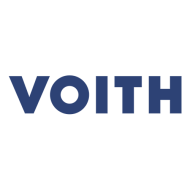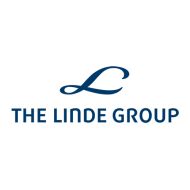The integrated one2edit™ workflow engine can be used to create editing, feedback and approval processes quickly and simply using the drag and drop function. There’s no limit to the number of process steps or participants involved. You can set up automatic notifications to be sent when a process step is completed, activate interactions with other systems via web-services and follow the progress in the project overview.
User rights can be based on roles and job assignments – and can be adapted for each individual project. External and internal users worldwide are able to work together through their browser. Each user has a personalized list of tasks, while the project manager can follow all activities in the project overview. This makes localization and adaptation of communications materials an efficient and transparent process.
There’s no need to create complicated workflows or business process notations, and no need for programming skills or training activities. Our workflow engine is built to meet real-world needs and makes it possible to create processes quickly – and adapt them just as fast if necessary. Workflows enable you to automate processes by offering a wide range of export functions and possibilities to communicate with other systems. You can also save workflows and reuse them as templates. This gives you the power to standardize your processes using the one2edit™ workflow engine without having to give up your agility.
The one2edit™ brand design framework can be set up with just a few clicks. You can generate templates that reflect your choices about which formatting options to make available for your users. Each user can then choose from your library of templates based on their access rights. It’s also easy to create self-service functions for actions like setting the font size or character spacing – using slider controls that are configured in line with your preferences for the minimum and maximum values.
You can also make additional design options available for any users who need them. one2edit™ features all of the InDesign formatting options for text and images. You decide what makes sense and what’s allowed. You can set company-wide standards and define any exceptions with fully-individualized design rules whenever necessary.
Once you’ve saved your brand design rules, you can reuse them and assign them to projects easily using the drag and drop function. Any changes to saved rules will automatically be applied to any templates that use this rule. Design rules can be applied to an entire document or to individual elements of a document. This granular management of rules opens up the maximum amount of flexibility and ensures compliance with your corporate design guidelines – with a minimum amount of effort.
Design templates within one2edit™ give users the freedom to adapt documents to meet their preferences – while always staying within the design guidelines. These guidelines operate in the background to ensure users don’t get overwhelmed by endless possibilities and prevent them from formatting documents in ways that are not aligned with your brand identity.
You can create self-service functions for adapting communications material like posters, flyers, invitations or business cards quickly and easily. Your company’s employees can adapt materials to meet their specific needs – within the limits of your pre-defined brand design rules. They can then download their design as a production-ready PDF. Of course, you can also define other workflows that send documents to be printed or that require users to begin an approval process.
The one2edit™ design templates make it easier and faster than ever to adapt documents for different requirements – with no need for InDesign skills or external service providers. And they also make sure that everything is created in line with your brand design guidelines, without creating stress for your employees.
one2edit™ is based on the industry-standard Adobe InDesign® server technology. Unlike many similar products, it does not convert InDesign documents into another format during the editing process. one2edit™ manages the InDesign server remotely, transferring your inputs and changes without any losses.
Thanks to its real WYSIWYG processing, this method makes your tasks more straightforward. On top of this, all InDesign functions can be used and retained, including anchored objects, inline graphics and textbox chains that cover several pages. This is particularly valuable for complex layouts or very large documents.
You can check your documents out of the process at any time and edit them in the desktop version of InDesign because one2edit™ works without converting InDesign formats. This means your agency can make changes to the layout and then check the document in again – without loss and without risks.
one2edit™ follows a consistent, best-of-breed approach that gives you the power to connect one2edit™ with as many other systems as necessary. Choose the best solution, continue using your existing systems and achieve end-to-end processes along the entire content management value chain – from supply through to distribution.
one2edit™ offers a comprehensive and powerful RESTful server API (programming interface) as well as a JavaScript Client API for interactions with programs on workplace computers or special adaptations of the one2edit™ user interface.
Alongside these two programming interfaces, you can also access a variety of standard interfaces for a seamless and deep integration with leading systems.
Using our File Client creates a seamless and user-friendly connection with the desktop workspaces of creative teams. This enables them to open, edit and save InDesign files with a simple double-click, just like they can on a local hard drive – without any need for uploading or downloading.
Standard Single-Sign-On (SSO) processes are available to support the integration of portal solutions like brand management portals, marketing platforms or intranet channels. Simply connect your company directory via LDAP. one2edit™ takes on your groups, roles and user rights – and then allocates the specific attributes of one2edit™ that are necessary for efficient collaboration, even in complex organizational structures.
The one2edit™ text rules give you the power to automatically check and correct the spelling and typographical formatting of product names and descriptions, (chemical) formulas, prices and many other types of content that are often time-consuming to implement and check manually.
The rules make sure the registered trademark symbol is automatically added to your product names when users enter them into one2edit™ or when product names are entered into one2edit™ via an external data source. Special spellings (upper- and lower-case letters) and formatting (bold, underlined, italics, spacing between letters etc.) can be applied automatically, removing the need for quality control processes.
Formatting possibilities cover the full range of Adobe InDesign® options, so you don’t have to compromise and have the power to implement even the smallest typographical details.
The one2edit™ text rules can be applied automatically or presented to the user as a suggestion. Whenever multiple options are presented at the same time, users simply select their preference from a list. And alongside saving you time, the one2edit™ text rules also help you improve consistency and strengthen the quality of your communications content.
Dynamic Layout Engine (DLE) is an expansion module for one2edit™ that can automatically make format changes to documents by following pre-defined guidelines. Based on a master document that has been set up to follow specific rules whenever the height or width of the format are changed, you can use DLE to create multiple additional formats in just a few seconds.
The comprehensive guidelines within DLE make it possible to connect design elements like text frames and image frames. On top of this, you can define absolute, relative, maximal and minimal spacings between elements or set the document dimensions, while also limiting the minimum and maximum values that apply when making elements or fonts bigger or smaller. You can also define a huge range of further rules for how documents should behave when the format is adapted.
The Dynamic Layout Engine (DLE) automatically generates a document that has been adapted to meet the specific output format – and that is fully aligned with brand guidelines. Different formats of the same design can be created at the touch of a button within the user interface for one2edit™ or through a web service API as part of a batch process. Your corporate design guidelines for spacing, logo size and position, typography and more are implemented automatically.
DLE can be used to create print documents as well as image files in PNG or JPEG format in whatever size you choose. This makes it possible to produce a web banner or image for social media based on templates at rapid speed – without the need for any external support.
The intuitive and flexible user interface can be adapted to meet all requirements. one2edit™ offers a role-specific display with an interface that only features the relevant functions for each specific user. This gives users a simple and fast introduction to one2edit™, while increasing acceptance levels and raising the degree of use – which eliminates the need for training in the majority of cases.
Access rights and user roles can be freely defined and allocated quickly and simply through group structures. one2edit™ can be set up to reflect multiple internal and external organizational structures. You can also manage the specific content each user is able to access, as well as defining every individual user’s role within each workflow and deciding which tools and formatting options for editing documents are made available.
Make content elements available to be edited by a group of users by moving them into ContentGroups using the drag and drop function. Create multiple ContentGroups to distribute content to various teams or individuals (e.g. copywriting, image editing etc.) or withdraw selected content from the editing process simply by not allocating it to any of your ContentGroups. one2edit™ can even allocate most content automatically as soon as you import the InDesign document.
The detailed options and settings for rights and roles provide a secure and efficient way of working, even for less-experienced users.






 Global
Global




